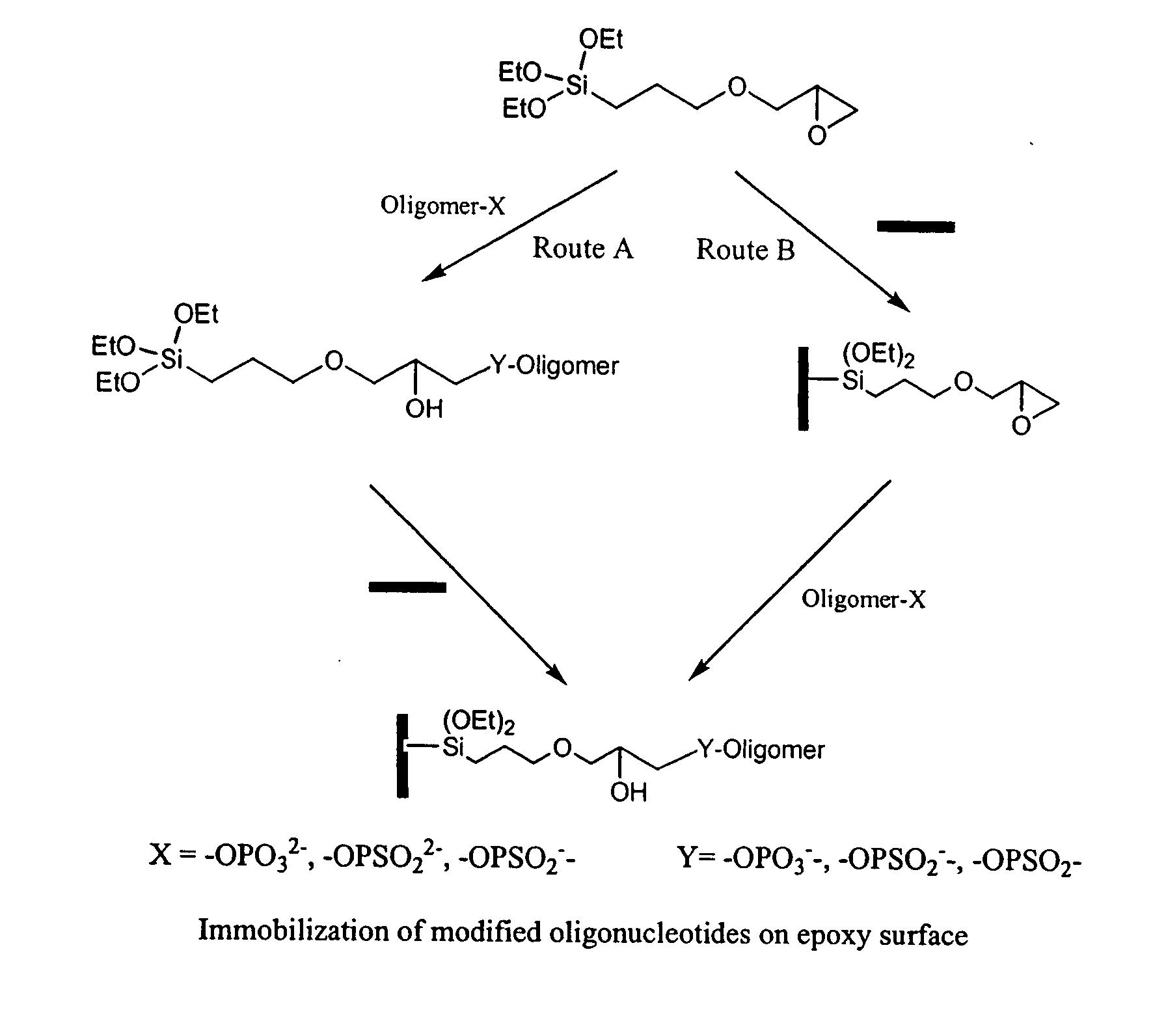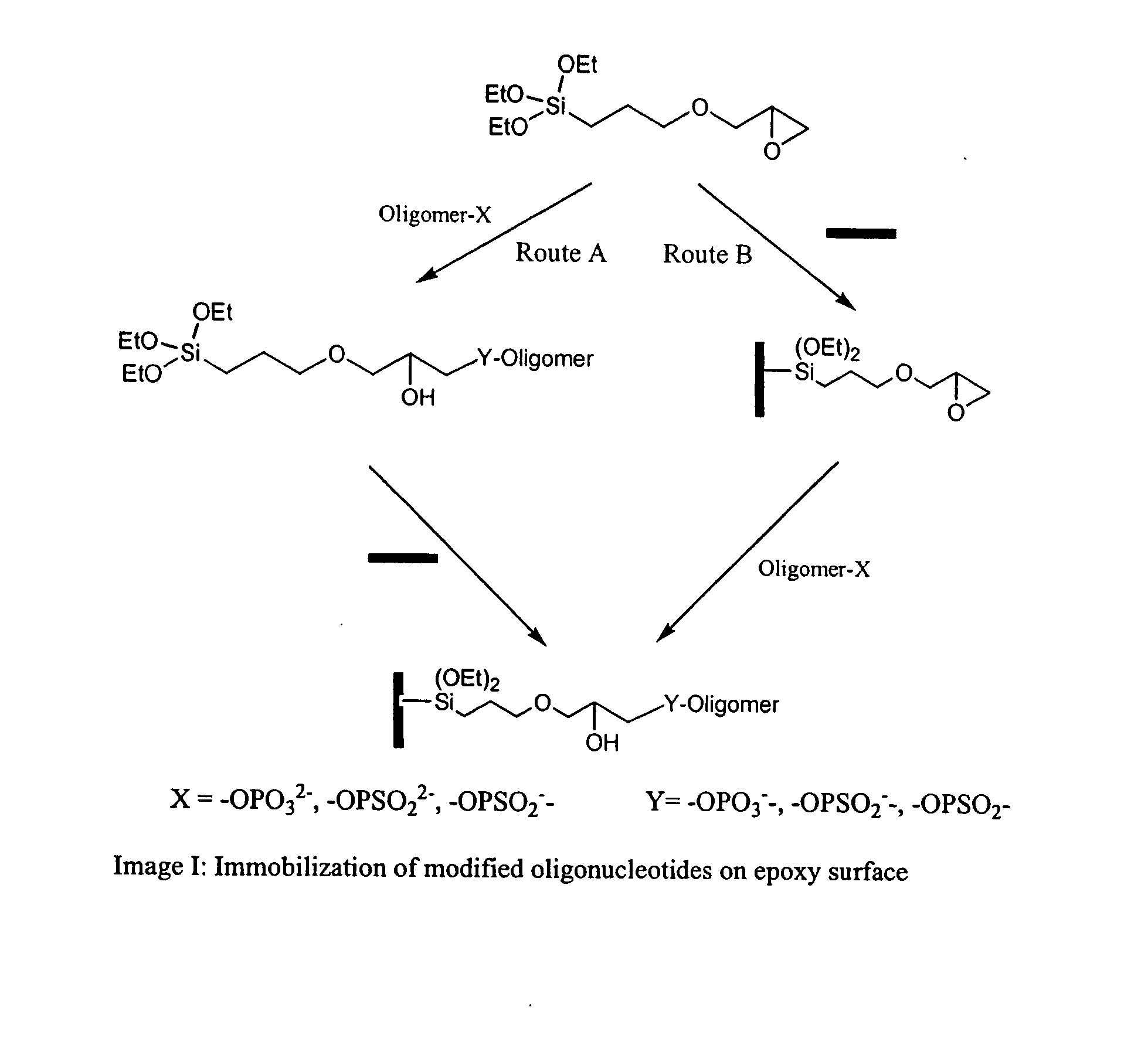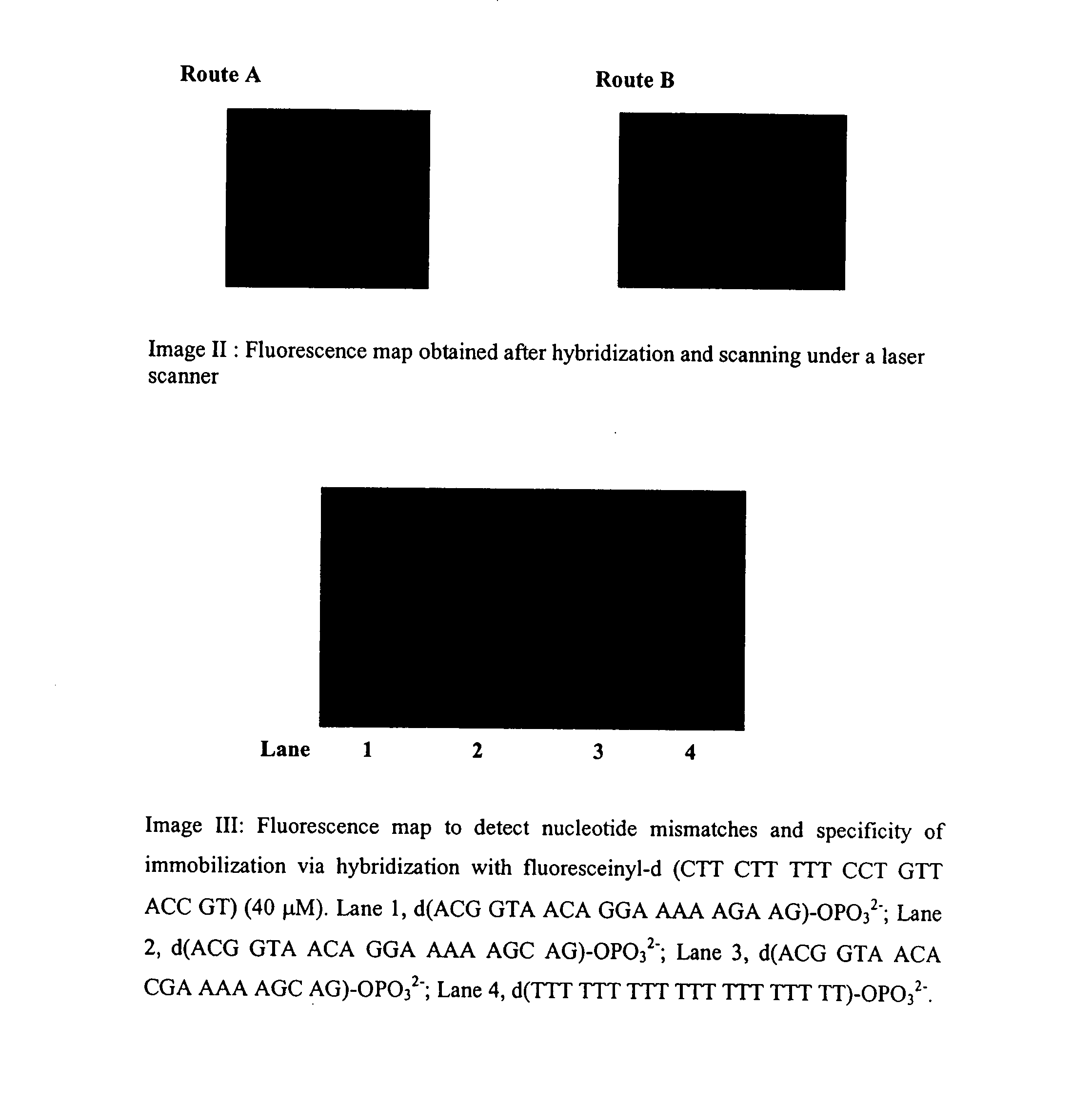Novel method for construction of oligonucleotide microarrays
- Summary
- Abstract
- Description
- Claims
- Application Information
AI Technical Summary
Benefits of technology
Problems solved by technology
Method used
Image
Examples
example 1
Preparation of Epoxy Coated Glass Microslides
[0034](a) Virgin glass microslides were cleaned with anhydrous ethanol and dried under vacuum. These plates were treated with a solution of 3-glycidyloxyropyltriethoxysilane (GOPTS) in toluene for 2 h at 50° C. with occasional agitation. After cooling to room temperature, the microslides were washed sequentially with toluene (2×50 ml), acetonitrile (2×50 ml) and diethyl ether (2×50 ml) and dried under vacuum in a desiccator. Then the support was dried under vacuum.
(b) Aminosilane-glass slides were activated by rinsing with a solution of diisopropylethylamine:triethylamine (1:1, v / v) followed by washing with anhydrous ethanol. The dried aminosilane glass microslides were treated with a solution of butanediol-1,4-diglycidyl ether (1M). The slides were shaken occasionally for 8 h at 45 oC. Then the slides were rinsed with acetonitrile (4×50 ml) and diethylether (2×50 ml), respectively. The slides were kept in an amine-free desiccator for dry...
example 2
Immobilization of 3′-phosphorylated Oligonucleotides Via Route A
[0035]The attachment of 3′-phosphate-modified oligonucleotides (synthesized following the standard protocol, Tet. Lett., 1991, 32, 967) to glass surfaces was performed via an epoxide ring opening reaction by phosphate group (Route B). The 3′-phosphate oligonucleotide, d(TTT CTT GCT GGT CTC GCT-PO4), was diluted to a concentration of 5 to 40 μM in 0.1M N-methylimidazole buffer and spotted onto the epoxy-coated glass slides surface. Arrayed oligomer was incubated in a humid chamber for 2 h at 45° C., followed by blocking of excess epoxy rings with 0.1M Tris, pH 9.0 for 1 h. The plates were then washed with 0.1M SSC buffer, pH 7.5. Then the slides were dried under vacuum in a desiccator and store it in refrigerator until their use.
example 3
Hybridization Assay
[0036]Hybridization experiment was performed in the following manner. The spotted glass microslide as obtained in example 2 was kept in a moist hybridization chamber and the spotted area was covered with 50 μl solution of complementary labeled oligomer, Fluoresceinyl-d(AGC GAG ACC AGC AAG AAA), of concentration 50 μM in 0.1M SSC buffer containing 1M sodium chloride. The area was then covered by cover-slip and incubated the plate at 60° C. for 10 min, then allowed to cool at room temperature and then to 10° C. in the cold chamber. The plate was kept at this temperature for 30 min for complete annealing to form stable duplex. After washings with same buffer, the microslide was dried and visualized under laser scanner.
PUM
| Property | Measurement | Unit |
|---|---|---|
| Temperature | aaaaa | aaaaa |
| Temperature | aaaaa | aaaaa |
| Temperature | aaaaa | aaaaa |
Abstract
Description
Claims
Application Information
 Login to View More
Login to View More - R&D
- Intellectual Property
- Life Sciences
- Materials
- Tech Scout
- Unparalleled Data Quality
- Higher Quality Content
- 60% Fewer Hallucinations
Browse by: Latest US Patents, China's latest patents, Technical Efficacy Thesaurus, Application Domain, Technology Topic, Popular Technical Reports.
© 2025 PatSnap. All rights reserved.Legal|Privacy policy|Modern Slavery Act Transparency Statement|Sitemap|About US| Contact US: help@patsnap.com



